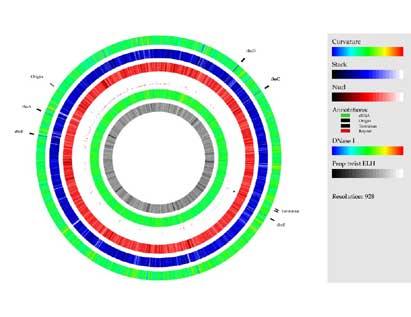Make genes express easier and cheaper
The method used so far was laborious and slow, since it was normally worked with mutant mice, in which the function of the gene studied or its function in a metabolic path was seen. In these mutation investigations, the possibility of error could not be totally ruled out.
The new method allows investigating biological systems in natural conditions. Consequently, the probability of error decreases considerably, as a true order of expression is observed.

According to previous studies, the 14 operones of the flagella of the bacteria Escherichia coli are organized in 3 consecutive groups. Each class encodes the following transcription activator. In the new research, researchers have used 14 fluorescent protein plasmids under the control of a flagellum promoter and have analyzed gene expression over time. With the help of an algorithm they have analyzed the curves according to the time and have been able to see in what order the genes have been expressed. The order of group genes obtained with the new method coincides with that of previous research.
As they have known the flagella system of the bacteria E. coli, with the new method it is expected to obtain exact kinetic manifestations, as well as the verification of paths identified by conventional genetic methods or DNA micromatrices. In addition, it is much cheaper than using DNA micromatrices and has a lower degree of error.
According to the researchers, the method is useful for analyzing the genes of any sequenced prokaryote and eukaryotes with simple zones of gene promoters. Although they hope to obtain more results, they have found that gene expression based on time corresponds to spatial organization.
Buletina
Bidali zure helbide elektronikoa eta jaso asteroko buletina zure sarrera-ontzian











